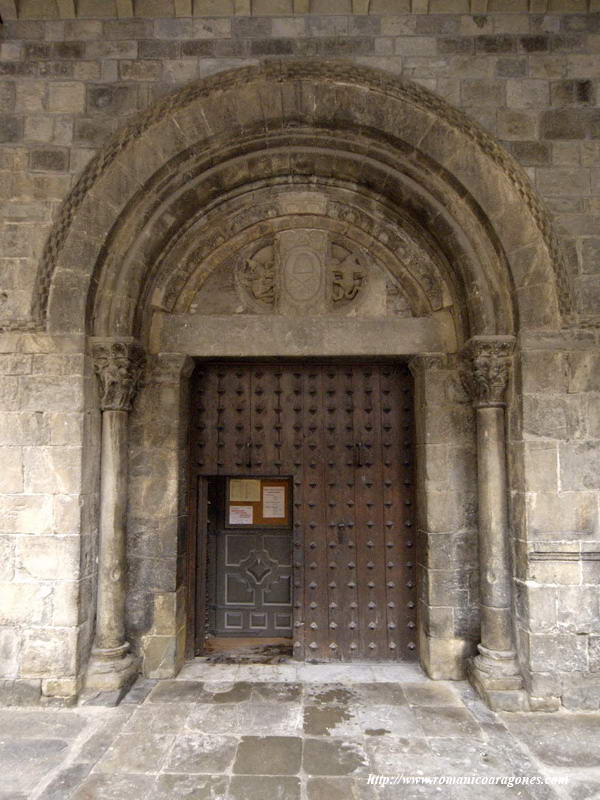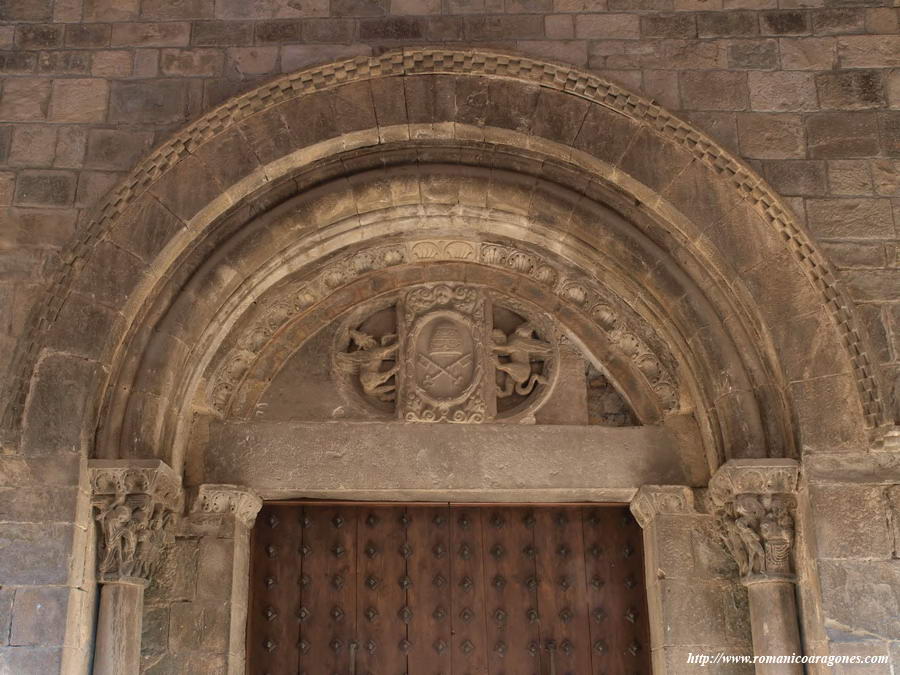
On one of my visits to Jaca
(13-02-09), Father Jesús Lizalde was kind enough to show me a little-known
piece kept in the sacristy of the cathedral. It is a rectangular stone plaque
which, although in a deteriorated state, is undoubtedly carved in the sculptural
style of the Master of Frómista-Jaca (thus named because of the stylistic
connections between the sculptures in Frómista and Jaca). Despite
the deterioration, it is possible to discern the image of Christ standing,
his right hand held up in the gesture of blessing and the left hand holding
a book. This posture is that usually adopted by Christ Pantocrator in a
multitude of Romanesque representations; the only exception here being that
Christ is standing and not contained within a mandorla. Part of a nimbus
can also be seen on the left side.
Father Jesús believes, and he showed me a sketch
he had done to illustrate this, that this piece is indeed the Christ Pantocrator
which was over the south portal of the cathedral before it was remodelled.
Nowadays, there is a modern sculpture in the centre of the
tympanum of the south portal. It shows the symbols of the patron of the
cathedral, Saint Peter: papal tiara and crossed Petrine keys (St. Peter’s
keys). The size of this section of the tympanum coincides with that of the
stone plaque shown at the top of the page.

This modern crest is flanked
by two small tympana depicting the symbolic representations of the Evangelists
Saint Mark and Saint Matthew, both turned so that they appear to rest against
the crest. Under the crest and Evangelists, there is a modern, wide stone
lintel which delimits the present entrance.
Having seen the sketch done by Father Jesús, I have
produced a superimposed outline of what he thinks the door must have been
like originally – to see this, just pass the cursor over the photo
below.

The theory put forward by
S. Moralejo (given to me by Dulce Ocón) regarding the same space
is that originally there was a Majestas Domini or Christ in Majesty where
the crest is today (see sketch below). This same hypothesis places the above
stone plaque sculpture to the right of the upper part of the portal and
built into the wall.
